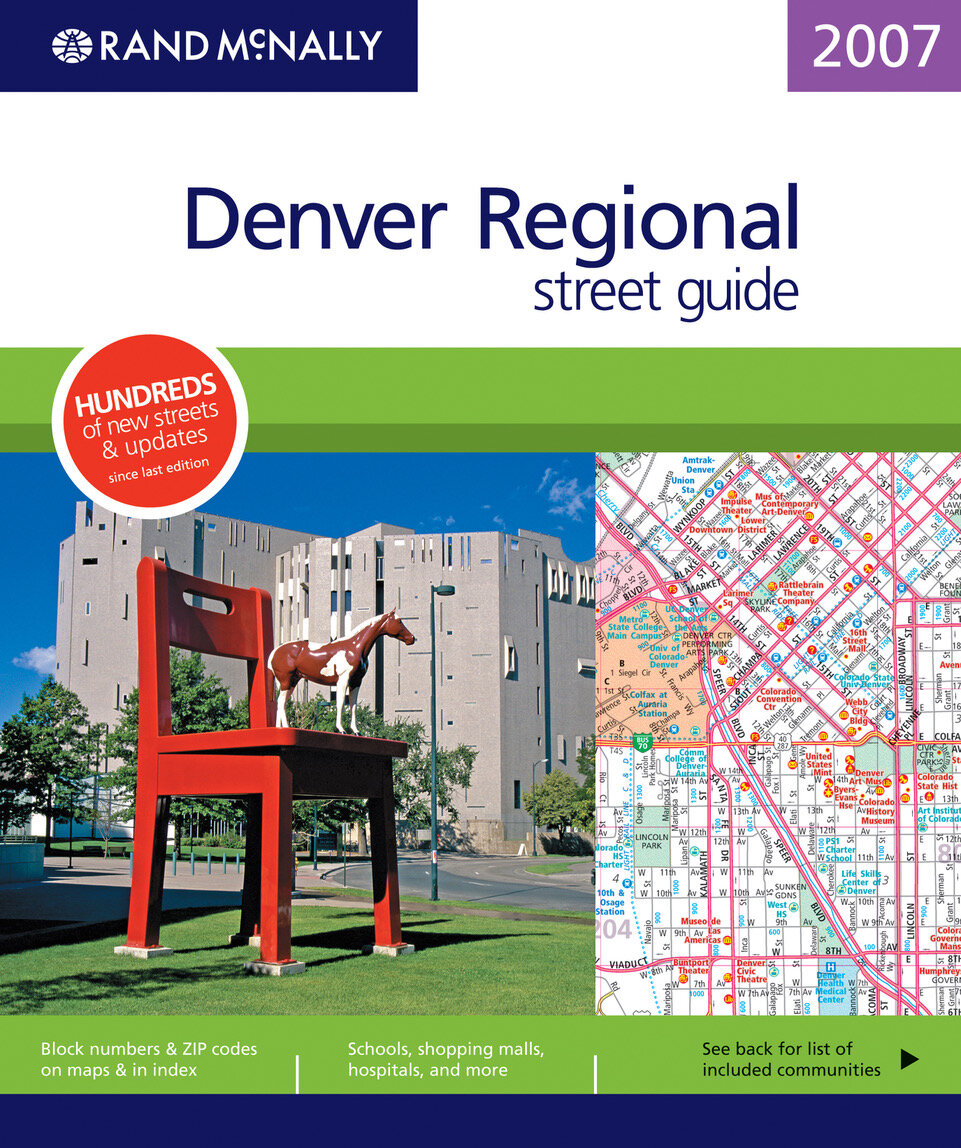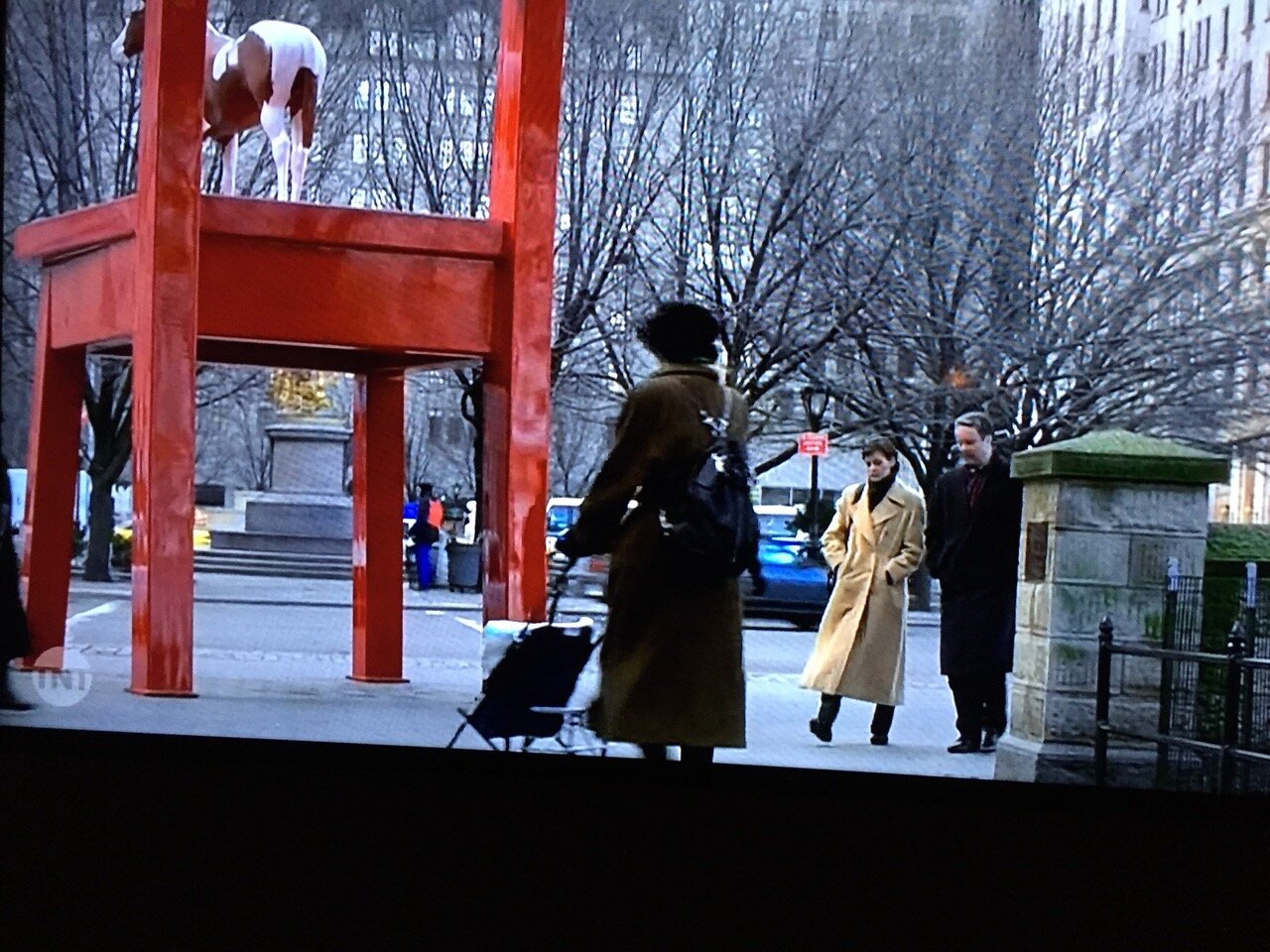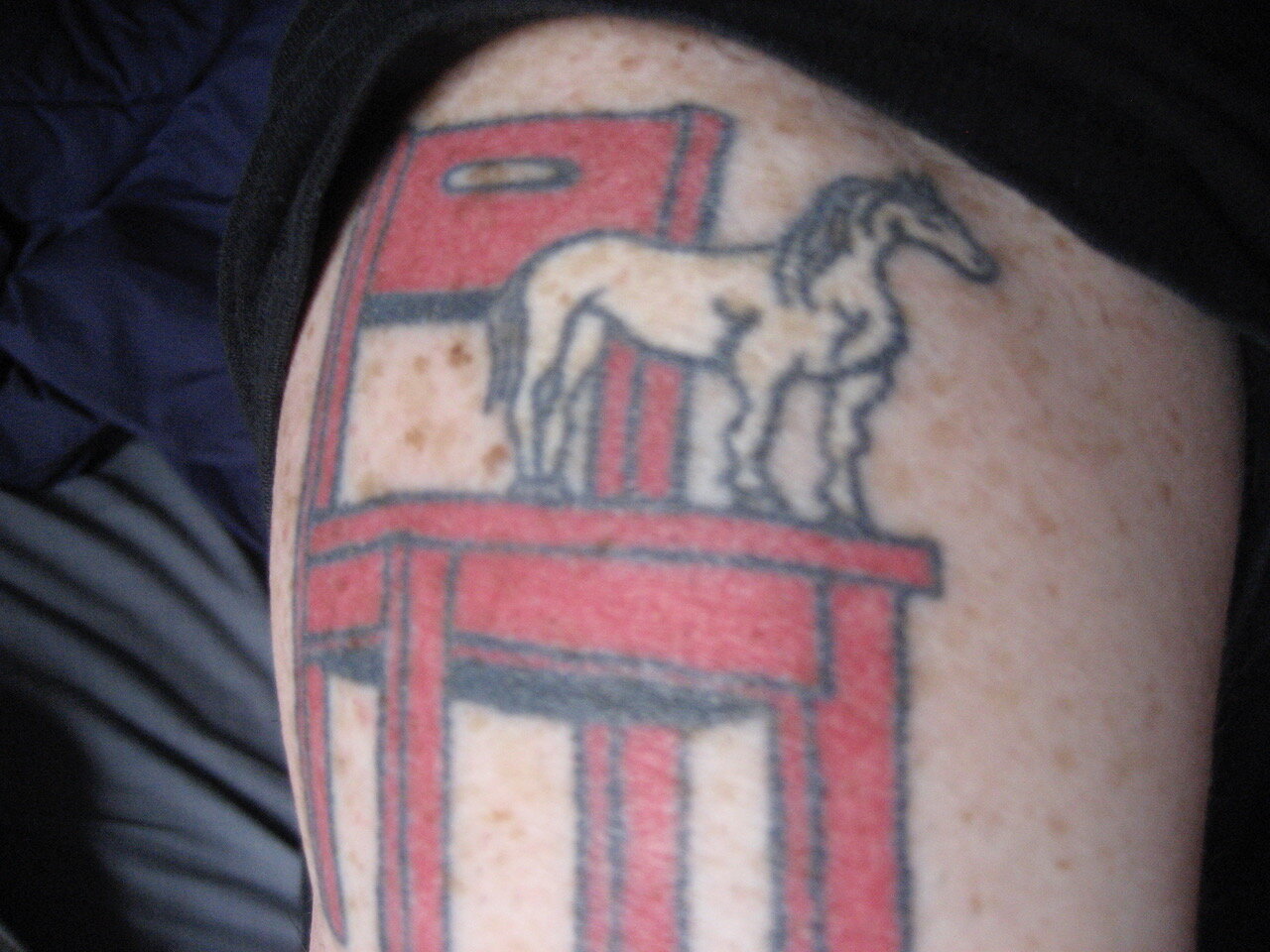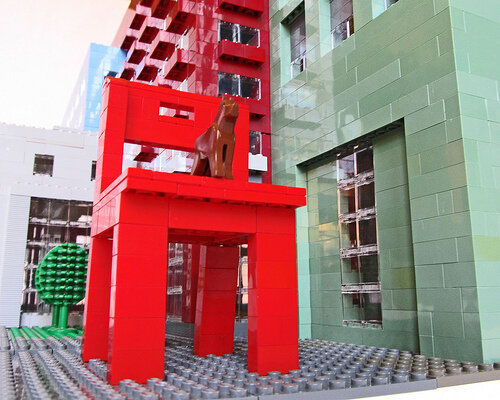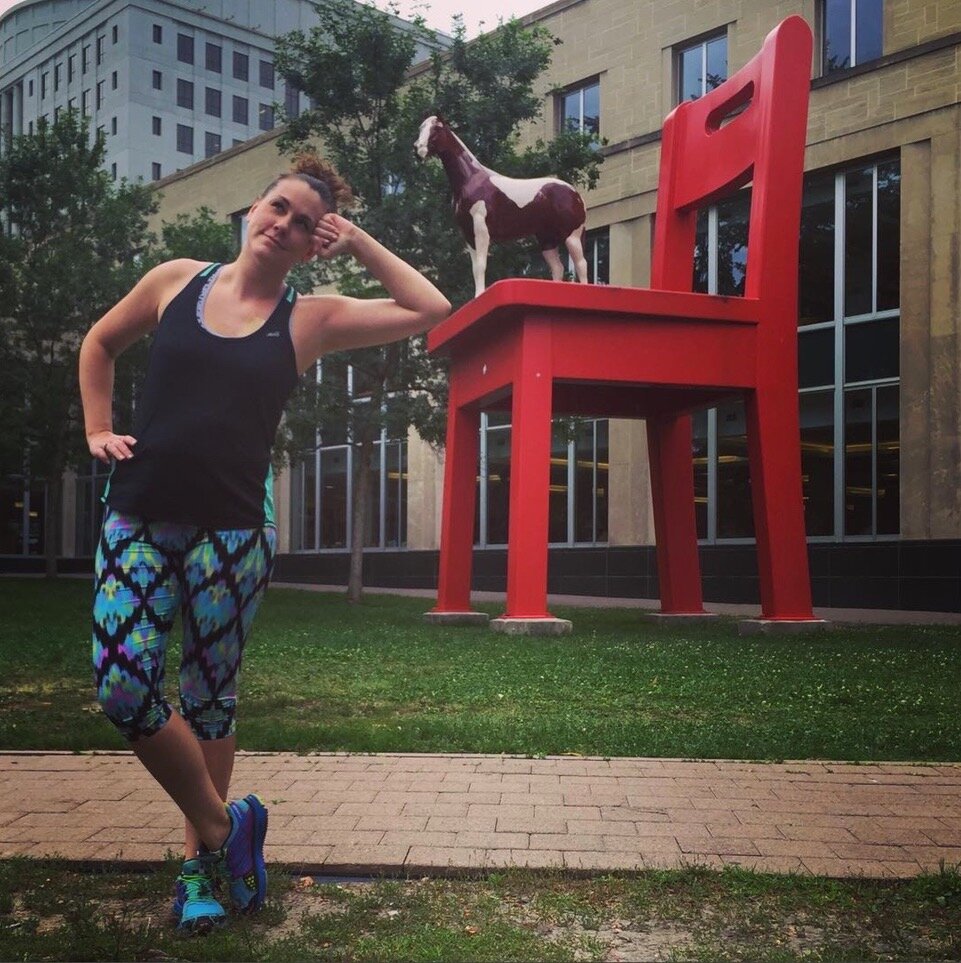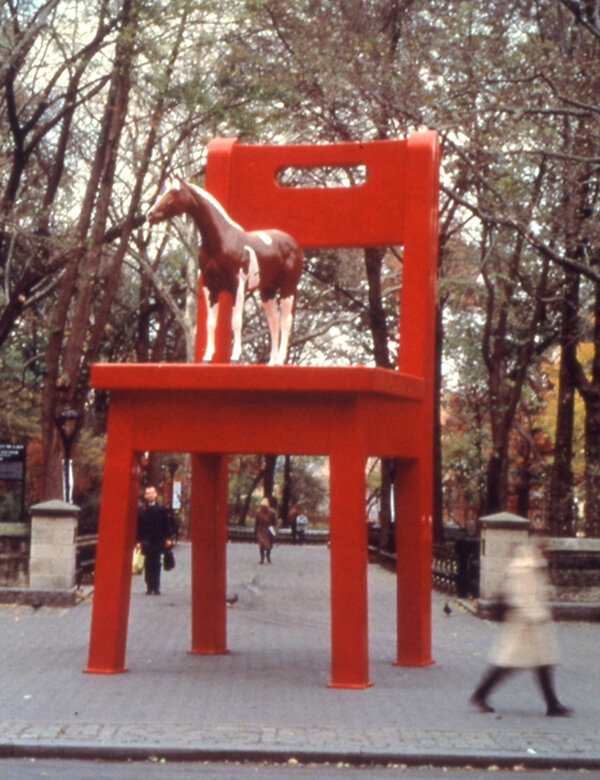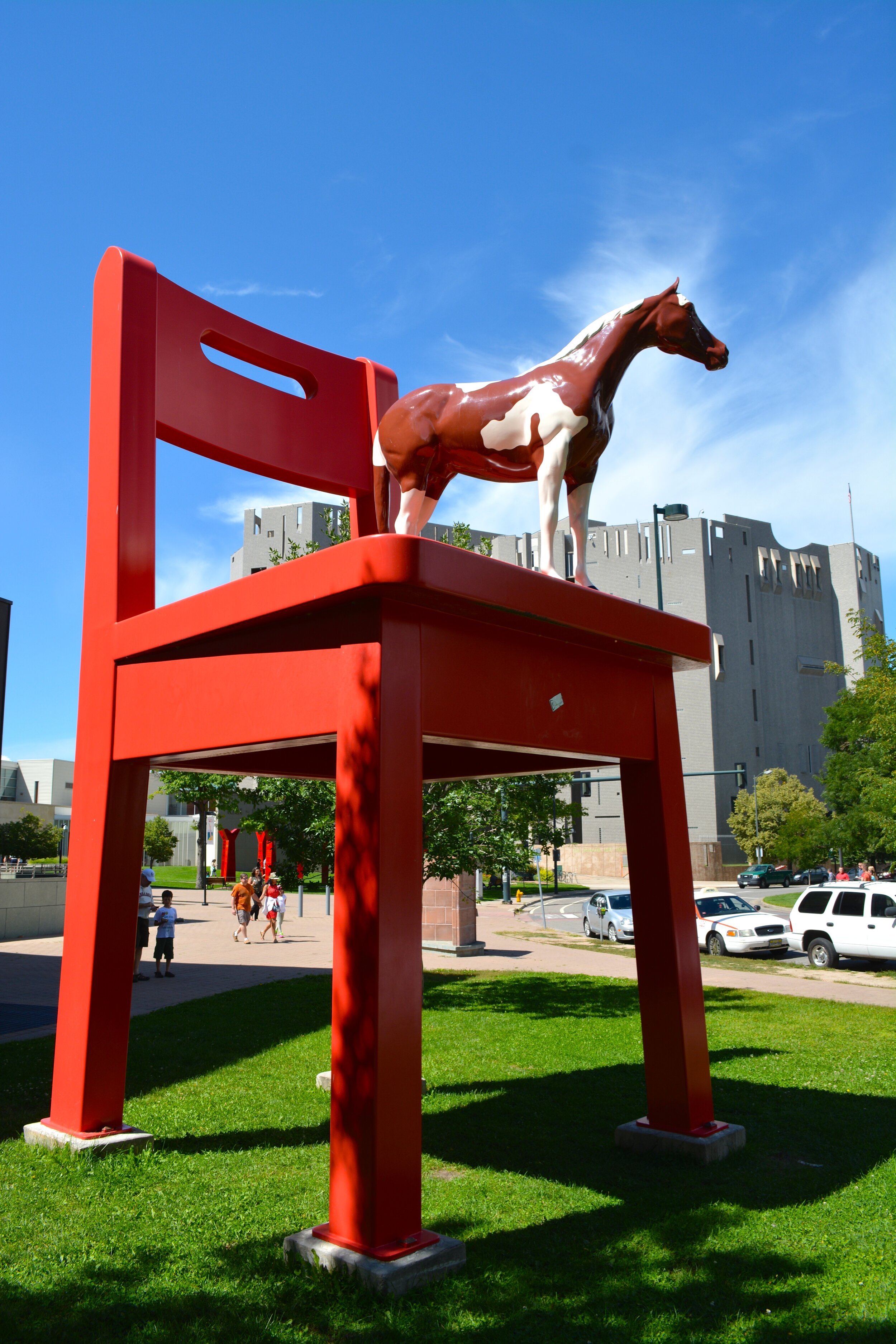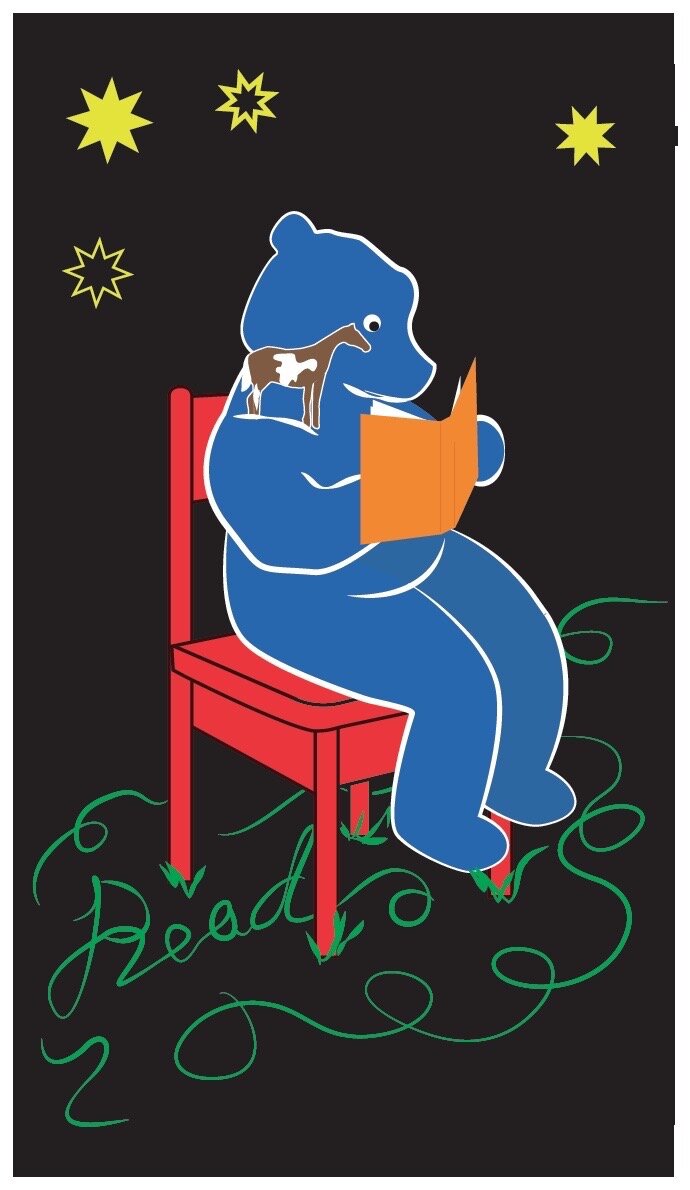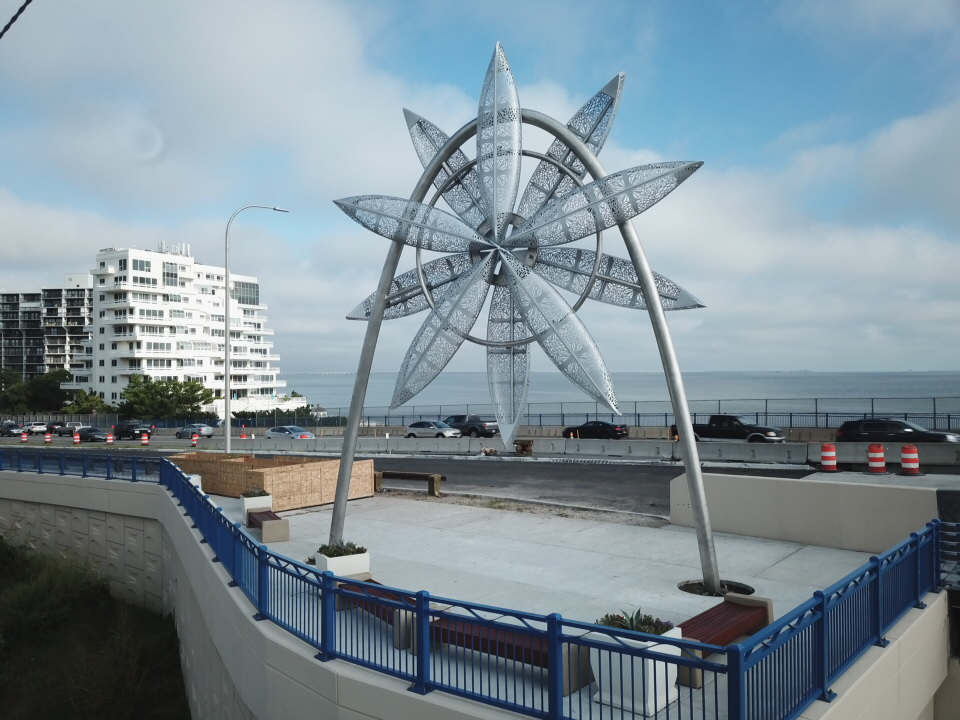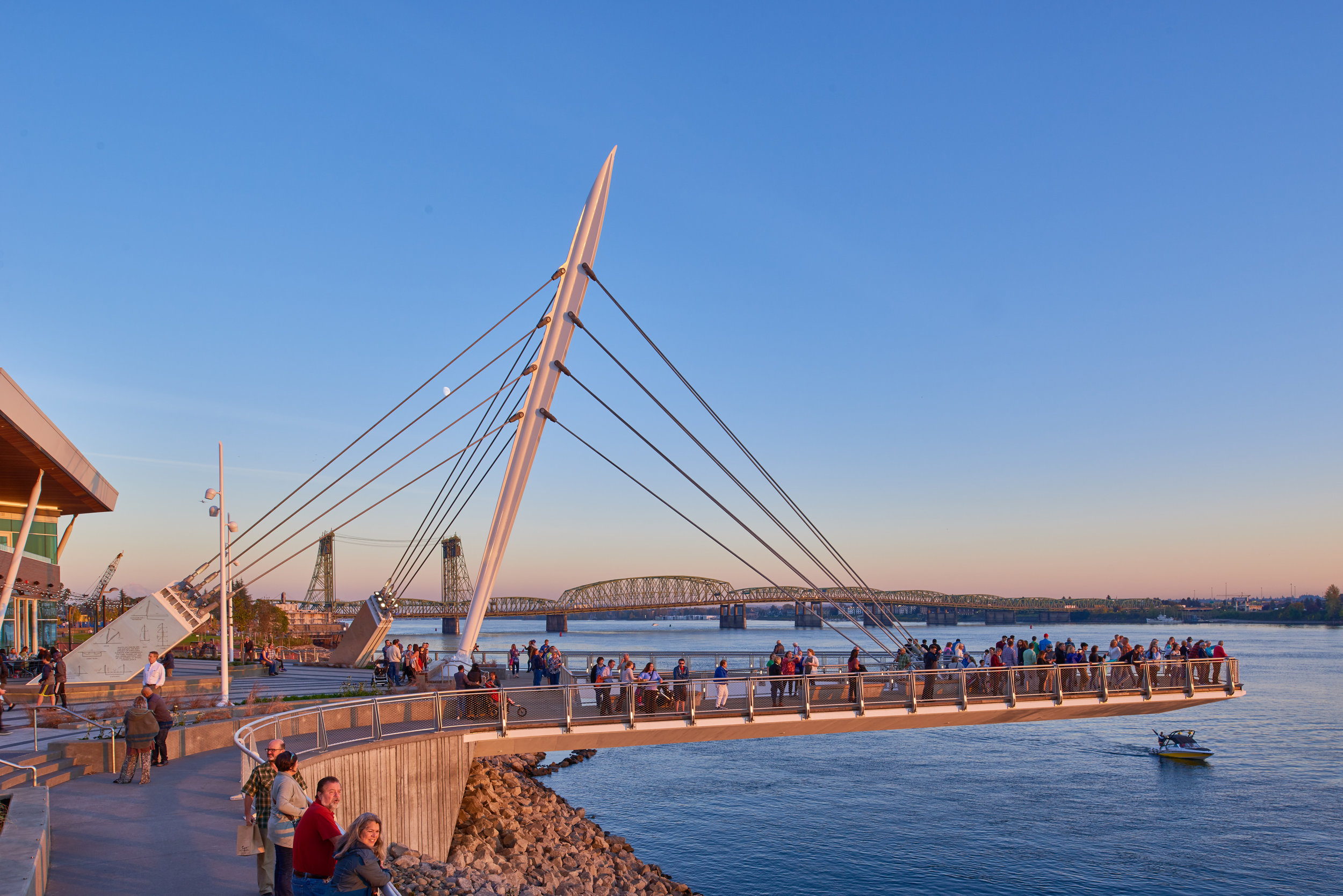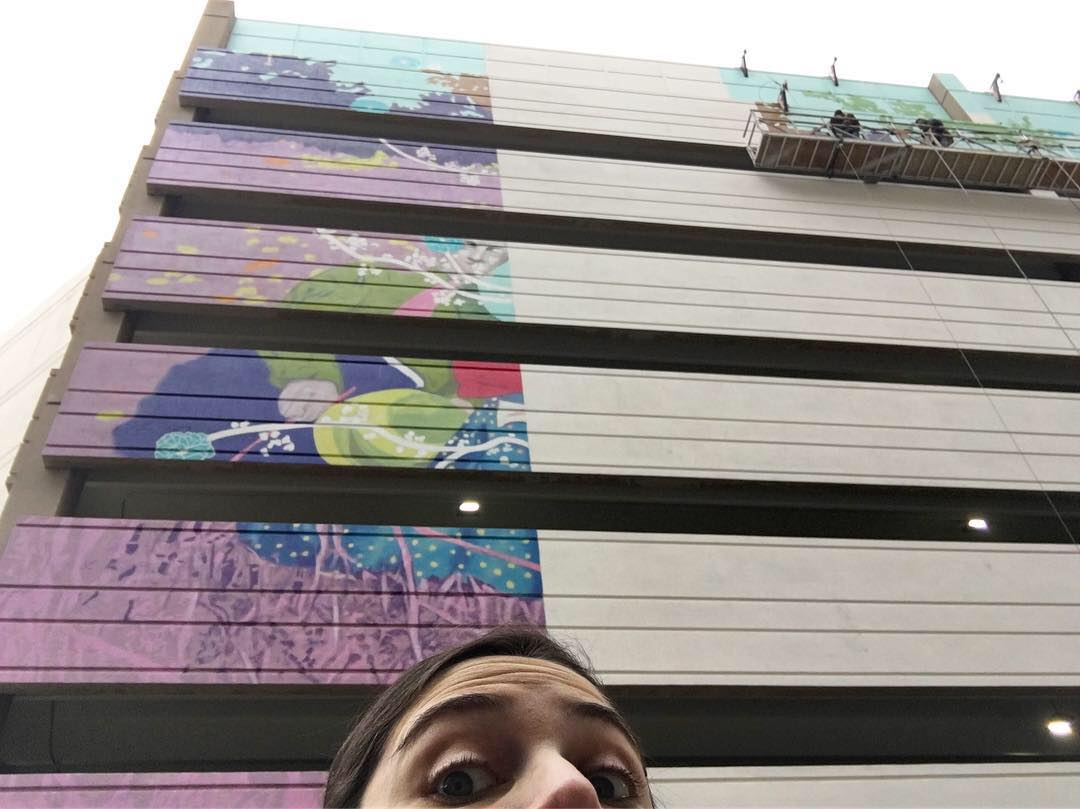Donald Lipski’s The Yearling has become widely known in Denver and beyond since its creation in 1993 and its subsequent permanent installation at the Denver Public Library Central Branch in 1998. Today we’re going to examine it’s long journey from proposal to permanent home, over a five year timeframe.
Donald Lipski, The Yearling, 1993
Around 1992 Tom Finkelpearl, who was the Director of New York’s School Construction Authority’s Art Program at the time, asked Lipski to develop a proposal for a new school in Washington Heights, located in the northern part of Manhattan. Lipski’s design for The Yearling was approved and he started the fabrication process.
At the time the largely Dominican neighborhood had long-standing disputes with the Board of Education. Lipski explains the community’s reaction to the work, “Sometime afterwards there was sort of a dustup and the people in the community had some problems with the piece. Part of the backstory is that there was a yeshiva, a Jewish school, across the street that had opposed the building of this school for a long time. During that process someone from the yeshiva had said ‘why spend good money to educate animals’. This obviously offensive statement stayed in people’s minds.”
Donald Lipski’s son Jackson with an early model of The Yearling.
During this time Lipski also heard various other reasons why the community opposed the piece. For the Dominican community the horse could potentially be viewed as a symbol of repression because of the conquistadors use of horses during their colonization. Some raised concerns over the sculpture encouraging children to climb on furniture. In Lipski’s words, “My feeling was that people really were taking out their anger at the Board of Education on me.” Lipski continues, “I wanted to do something that would cause the kids to imagine, to daydream. Kids are really interested in scale. They just want to be big. There's so much scale of exaggeration in children's literature. Alice in Wonderland, Gulliver’s Travels, James and the Giant Peach and so forth. At any rate the piece had been built and was in storage. There was a series of meetings. And I heard ideas like they wanted me to instead of a horse have a child wearing a mortarboard. Or a rainbow. None of these were satisfying to me. My thought was about the nobility of this horse looking out from a promontory. So I wasn't going to change the piece.”
The city continued to work to find an alternative location for the sculpture, offering it to different schools in the New York school system but they all rejected it because they wanted to remain in solidarity with this new school in Washington Heights. “So we were left with the situation where the piece had been built and paid for and was in storage, with no solution in sight,” said Lipski.
Donald Lipski, La Guardia Suite, 1997
Eventually an idea was developed to have Lipski create a new work for a different site and trade it for The Yearling. This resulted in the creation of a new work for LaGuardia High School of Music and Art (located behind Lincoln Center and depicted in the movie Fame) entitled, The La Guardia Suite. This new work was installed in 1997 over the two entrances to the school’s theater and incorporated donated objects that represented the various performing arts taught at the school. “I was given violins from a violin program for children in Harlem called Opus 118, started by Roberta Guaspari, (played by Meryl Streep in the movie Music From the Heart). They had been damaged by a flood in their basement. I received ballet slippers from the New York City Ballet. I was invited to choose some costumes from the collection of The Theater Development Fund,” said Lipski. After Lipski created The La Guardia Suite, he reclaimed ownership of The Yearling.
Donald Lipski, La Guardia Suite, 1997
In 1997, The Yearling was exhibited at Doris Freedman Plaza in Central Park in New York by the Public Art Fund. As luck would have it, it caught the of eye of visitors from Denver and the The Yearling was later purchased by Nancy Tieken, who has since passed away, as a gift to the city of Denver. The piece was installed outside the Children's Wing of the Denver Public Library where it still sits today.
Donald Lipski, The Yearling, 1997, Doris Freedman Plaza in Central Park in New York
So now we know how The Yearling made it to Denver, but that’s not where this story ends. The original horse that stood atop the giant red chair was made of fiberglass and due to Denver’s harsh UV rays the horse needed to be repainted every year. To alleviate this need for yearly maintenance, a mold was created of the original horse and it was recast in bronze. At the time the original fiberglass horse went on to reside in the office of Mayor John Hickenlooper who had grown fond of the horse. So fond in fact that when he was elected Governor, he took the horse with him to his new office.
Donald Lipski, The Yearling, 1993
Despite its eventful origin story, The Yearling has only grown in popularity over the years. It’s been featured on the cover of the Rand McNally Road Atlas of Denver and the cover of Denver’s phone book. It even appeared on TV in an episode of Law & Order and was an answer on Jeopardy. Some individuals have even gone as far as tattooing this work of art on their bodies, using it to adorn their wedding cakes, the list goes on and on. This work also holds special significance to Public Art Services as it marks the meeting of Donald Lipski and Creative Project Manager, John Grant, who at the time was running Denver’s Public Art Program. We’ve now gone on to work with Lipski on over 25 projects with an additional 7 projects currently in the works.
